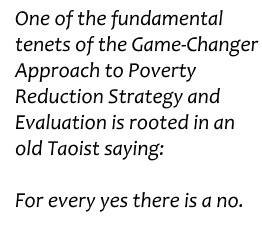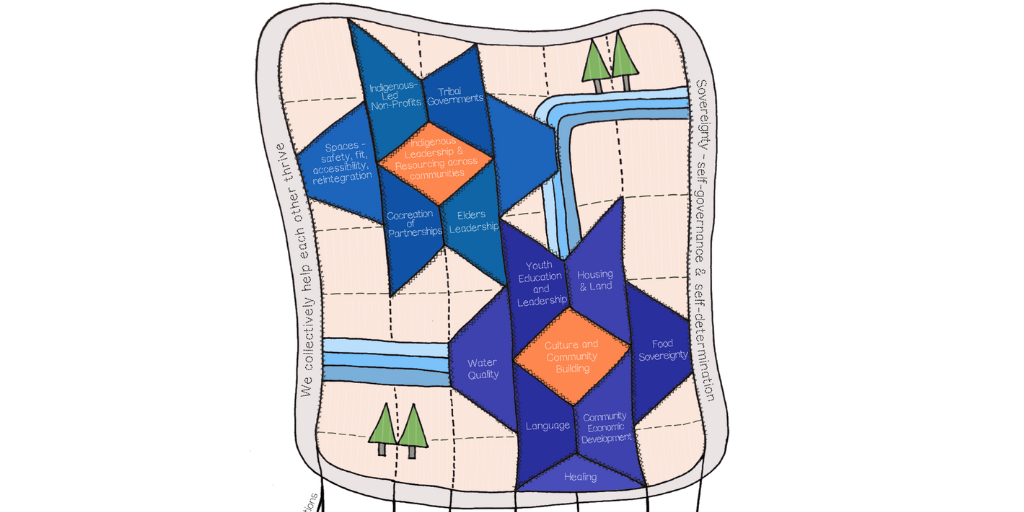As some of you know, I have written about and I am continuing to work on what I call a Game-Changer Approach to Poverty Reduction Strategy and Evaluation. You can read my initial paper HERE. And a recording of a webinar I did with Mark Cabaj is HERE.
I have been asked about the difference between Social Determinants of Health (SDoH) and this game-changer approach I am working on with my colleagues at Vibrant Communities Canada. The game-changers we have identified are: Housing, Transportation, Education, Health, Income and Jobs, Food Security, Financial Empowerment, and Early Childhood Development. All of these are aligned with SDoH, but there is, I suggest, more to what we are exploring than social determinants of health.
 The game-changer approach also is stressing the importance of avoiding the creation of “thin” strategies among a host of other “thin” strategies that, in effect, can lead to an overall poverty reduction strategy that is a mile wide and an inch deep.
The game-changer approach also is stressing the importance of avoiding the creation of “thin” strategies among a host of other “thin” strategies that, in effect, can lead to an overall poverty reduction strategy that is a mile wide and an inch deep.
The notion of prioritizing our efforts is one that is often accepted as necessary but in practice not emphasized. One of the fundamental tenets of the Game-Changer Approach to Poverty Reduction Strategy and Evaluation is rooted in an old Taoist saying, For every yes there is a no.
In other words, to have the degree and scope of impact we want to have in our communities, we must make hard choices in order to ensure that we have the time, resources, and capacities to achieve transformational impact. This is especially true for local roundtables addressing poverty in their communities because more often than not they are underfunded and under-staffed. A mile wide, inch-deep approach in such a case may not cut the mustard.
Another key aspect of the game-changer approach is that we need to see our work in ending poverty within a learning framewor,k more so than focus on data as the indicator of success. While data is important, just measuring Low Income Cut Off (LICO) and the Low Income Measure (LIM) over time is not good enough. Why? First because too often the measures we use are not realistic. The poverty line is not reflective of reality. Second, our historical desire to tie “our work” to results in a way that proves “our success” is more often than not a pipe dream.
For example, we see this desire for “attribution” as a key driver for funding of programs and services. Employment programs are one example. It is not uncommon, in my experience, with such programs for a funder to want assurances that someone employed through the program will still be employed a year or two from now. The fallacy of such an expectation is easy to discern, yet still many of us still attempt to attribute success to our work in ways that are unreasonable.
 If a person goes through an employment program and gets a good job, attribution is easier to claim; however, there are too many factors (the economy, employer downsizing, a person’s health situation, not to mention disasters like the Fort McMurray fire) to allow us to really state our program’s effect can be proven successful two years out. Besides, while funders may want this type of attribution, a key question is, to what extent are they willing to pay for an intricate, long-term measurement system that still could produce unclear claims of success?
If a person goes through an employment program and gets a good job, attribution is easier to claim; however, there are too many factors (the economy, employer downsizing, a person’s health situation, not to mention disasters like the Fort McMurray fire) to allow us to really state our program’s effect can be proven successful two years out. Besides, while funders may want this type of attribution, a key question is, to what extent are they willing to pay for an intricate, long-term measurement system that still could produce unclear claims of success?
The game-changer approach includes the calling to focus more on “contribution” as opposed to “attribution.” While the former may be criticized for being too subjective, in reality it is no less so than the latter. That said, significant change, in particular systemic change, does not occur because of one program, one agency, or even one collective impact effort. Such efforts, especially when linked together with the efforts of others, can and do contribute to big changes and there can be reasonable analysis provided that supports such contribution; however, clear and definitive attribution claims are, I suggest, more of a subjective reach than focusing on contribution.
As well, historically, we have tended to focus on measuring results within arbitrary timelines, most often annual segments. This 12-month view of our work is embedded in budget processes and in funder forms that ask for comparative results from one 12-month segment to the next, and the expectation, whether stated or subtle, is that these numbers will improve.
This is risky business in terms of effecting transformational change in a game-changer area. For example, affordable housing in Canada has not received sufficient attention by the Federal Governments of the past. Our housing stock is aging, and wait lists for subsidized housing are more likely to motivate hopelessness for those on the wait list than result in being housed.
 We identify affordable and safe housing as a game-changer because the benefits of decent housing has a cascading effect beyond the procurement of housing. People’s health improves, mental health problems often decrease or stabilize, social inclusion becomes more real, children experience more stable access to schools, addictions often decrease, and people start thinking about their futures (getting job training, going back to school) because they no longer have the stress and experience the harm of inadequate housing.
We identify affordable and safe housing as a game-changer because the benefits of decent housing has a cascading effect beyond the procurement of housing. People’s health improves, mental health problems often decrease or stabilize, social inclusion becomes more real, children experience more stable access to schools, addictions often decrease, and people start thinking about their futures (getting job training, going back to school) because they no longer have the stress and experience the harm of inadequate housing.
Getting to a place where our country and communities have appropriate housing for persons of all incomes will take time and involve the efforts of innumerable organizations and leaders from all sectors. One cannot measure the progress of achieving more and better housing for Canadians by simply measuring the quantity of housing in 12-month segments. In fact, it could take years to start seeing the growth in numbers.
Working across sectors to improve the state of housing in our country requires many contributors and will involve a lot of learning. Mistakes will be made. Barriers will surface, as well as great ideas, new policies, and so on. If we are serious about measuring the progress with this game-changer, we need to not only re-think our collective strategies but also rethink how we can evaluate progress.
I was part of a conversation a while back where one colleague expressed to a group of us that the only poverty reduction priority we should focus on is safe and affordable housing. Her view point was not well-embraced to say the least, and I am not inclined to see housing as the sole priority. However, her perspective does tie to the idea that in order to move forward on major changes, we may have to leave some others in the background. We may still work on them, but not to the extent the priorities we commit to. Again, for every yes, there is a no.
I am going to continue to write about this. And I am keen to hear from others. When we work with change, all of us need to learn as we go. Any help you care to provide is welcome, and I hope you are getting the same from me.
Recommended Reading
These resources are not focused on game-changers, but do offer provocative and helpful thought leadership on evaluation and strategy with respect to Collective Impact and/or Poverty Reduction.





